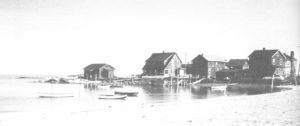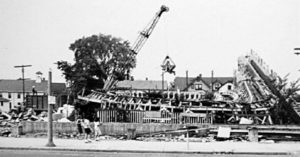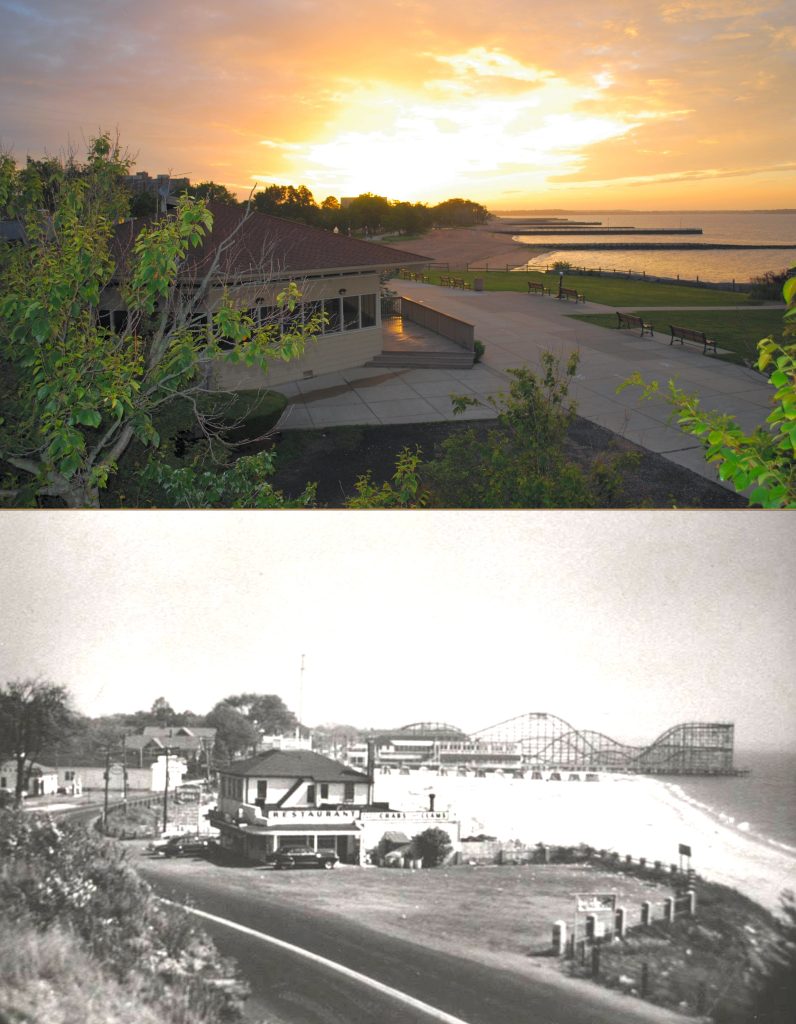
Savin Rock’s Transition
Part IV
See part 1 here.
See part 2 here.
See part 3 here.
See part 5 here.
The following is presented as submitted by Steve Hildrich from news clippings and his personal recollections:
During 1978, Mayor Robert Johnson tried to get the developers to agree to his “Compromise Plan” to save 25 acres. To some he seemed to betray his commitment to save the 40 acres, but he did not. The Supreme Court had to be obeyed.
By early January, 1979, the Harbor Mist Restaurant, successor to Phyllis’s, said “no” to any compromise. The other six developers agreed to the compromise. Mayor Johnson declared a “development deadline” of Feb. 5, 1979, the next Redevelopment Agency meeting.

Inspired by a friend, Steve Hildrich with Rev. Ernest Bodenweber of the ”Earth Stewardship” of the First Congregational Church formed a coalition with Tom Gallagher and the Jaycees and Carol and Bob Altvater and the West Shore Garden Club. IMPACT was invited but did not partake. Called the Concerned Citizens for Bradley Point, they petitioned, not the city, but a private restaurant, Harbor Mist (previously Phyllis’s and later the Casino). They gathered 1,600 signatures in four days, and presented their petition to the owners Sainis and Lazaris on Saturday. When resisted, Hildrich said, “I doubt your 1,600 customers will be happy to learn you refused to receive their representatives.” The owners agreed to talk with Hildrich and Gallagher, and finally they agreed to compromise if they could get something in return. Bill Riccio, Jr. of the West Haven Town Voice and the West Haven News (now of the Voice) was there when the four came out and announced their compromise.

Two days later the Redevelopment Agency meeting was raucous. Finally Mayor Johnson realized there was a basis for compromise, and asked the agency extend the deadline to March and it voted to do so. Two more postponements of development finally led the Compromise Plan being signed in May 17, 1979. A 20-acre Bradley Point Park was to be created (including separated Parcel J2).
As part of the compromise, Harbor Mist got a “right of first refusal” on Parcel M, meaning they could develop the property between the Rock and Capt. Thomas Blvd. (where kites fly today). However, Hildrich, who participated in negotiations, got included wording that said whatever was built on Parcel M “could not obscure the view of Savin Rock from Capt. Thomas Boulevard.”
This was key to a 1988 Superior Court decision in which Harbor Mist and the Casino received $0 in their suit for damages, upholding the city (and agency) decision to stop the 12-story high-rise development on Parcel M because it “obscured the view of Savin Rock.” (Jimmies v. West Haven, et al., Dorsey, J. 7-12-1988, pp. 23-24, 28)
IMPACT had opposed the Compromise Plan of 1979, calling it a “fraud” (Journal-Courier, 5-22-79, p.12), insisting they wanted all 40 acres then and there, ignoring that the Supreme Court had given the developers the right to agree to any significant change. The Concerned Citizens for Bradley Point wanted 40 acres of park, too, but realized that the Compromise was the best possibility at the time: 20 ACRES WAS BETTER THAN NOTHING. IMPACT continued to resist the Compromise. Finally in the Nov. 20, 1980, issue, the “West Haven Town Voice” admitted that the compromise was better than nothing and supported the plan.
Attorney Brian Fisher (later Judge) chaired the committee that got public input into what kind of park they wanted and oversaw the planning. The city succeeded in securing federal funds for walkways, lighting, landscaping, parking, and the flagpole and plaques.
To Be Continued-